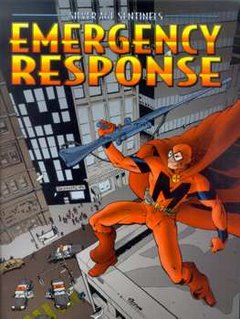Emergency Response Planning (ERP).
 Emergencies wreak havoc on businesses and governments on a daily basis. Whether it is accident/incident due to human factors (inexperience, manual handling), ergonomic factors, physical factors, or a hazardous chemical spill in the office or at a local school, which results can be loss of life, health, and property. How can you prevent or reduce the effects of such occurrences? By planning ahead.
Emergencies wreak havoc on businesses and governments on a daily basis. Whether it is accident/incident due to human factors (inexperience, manual handling), ergonomic factors, physical factors, or a hazardous chemical spill in the office or at a local school, which results can be loss of life, health, and property. How can you prevent or reduce the effects of such occurrences? By planning ahead.Emergency Response Planning is designed to help corporate and municipal managers quickly understand their roles in proactive and reactive emergency management.
SHEMS Solutions have useful materials on how to develop, plan ahead in order to prevent, prepare for, and respond to natural disasters and man-made emergencies. Emergency Response Planning provides essential information to help you comply with government regulations, design an emergency response plan, train personnel, use the proper safety equipment, safeguard information systems, and resume normal operations after an emergency as quickly as possible. It will also help consultants design emergency response plans for their clients, and provide practical information for staff on business continuity and emergency issues.
To order for your company's copy, you may reach us through our electronic mail address: shemssolution@googlemail.com



